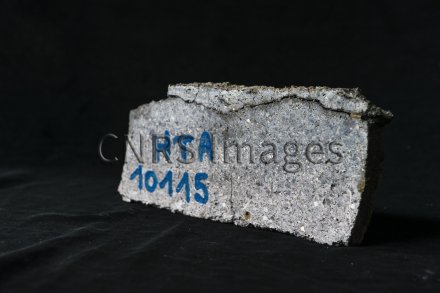Production year
2017

© Cyril FRESILLON / CEMHTI / CNRS Images
20170083_0026
Échantillon usagé, dit «post-mortem», d’une céramique réfractaire à base de bauxite. La bauxite tire son nom du village des Baux-de-Provence (Bouches-du-Rhone ) où ce minerai a été découvert en 1821 par le chimiste Pierre Berthier. C’est une roche caractérisée par sa forte teneur en oxyde d’aluminium ou alumine, matière première utilisée pour la production d’alumine et d’aluminium. La bauxite dite blanche (de grande pureté) est utilisée comme matériau réfractaire, résistant aux très hautes températures, notamment dans la métallurgie.
The use of media visible on the CNRS Images Platform can be granted on request. Any reproduction or representation is forbidden without prior authorization from CNRS Images (except for resources under Creative Commons license).
No modification of an image may be made without the prior consent of CNRS Images.
No use of an image for advertising purposes or distribution to a third party may be made without the prior agreement of CNRS Images.
For more information, please consult our general conditions
2017
Our work is guided by the way scientists question the world around them and we translate their research into images to help people to understand the world better and to awaken their curiosity and wonderment.